Spa F1 race doomed by extreme caution - Belgian GP takeaways
The 2025 Belgian Grand Prix at Spa was defined by a risk-averse approach. By the time the subdued F1 race had begun, all thrilling unpredictability had evaporated. Here are the main conclusions from the weekend
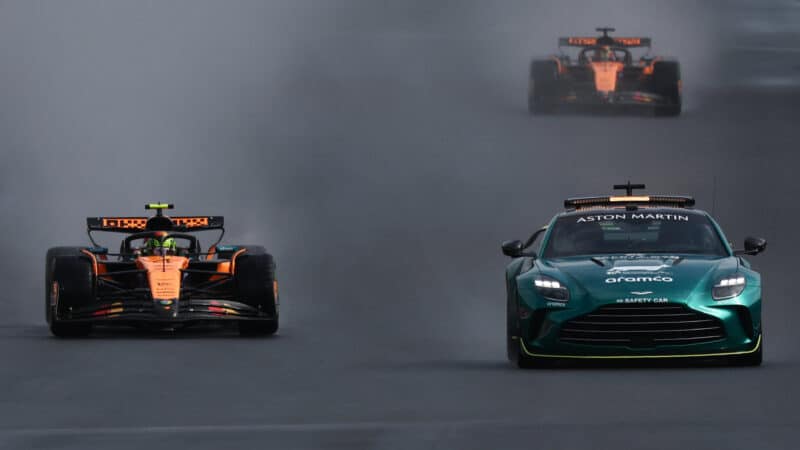
Getty Images
The 2025 Belgian Grand Prix weekend was marked more by extreme caution than racing excitement, highlighting a growing conservative trend in race management that ultimately stifled the typically dramatic and unpredictable action fans expect, especially in mixed weather.
An hour-long delay, followed by four slow laps behind the safety car, erased the traditional chaotic start and overtaking opportunities, leaving the race processional and largely settled by the first lap.
Despite this, the weekend offered compelling narratives, such as Oscar Piastri‘s calm assertiveness securing McLaren‘s dominance, Lewis Hamilton‘s struggles amid Ferrari‘s technical shifts, and the challenges facing Red Bull under new leadership.
Extreme caution contributed to lack of racing
It’s almost hard to believe that a Belgian Grand Prix with mixed weather conditions produced such a straightforward couple of races over the weekend (“straightforward” being generous in the case of the Sprint).
Sunday’s race once again highlighted the ever-growing conservatism in race direction, and nowhere was this more apparent than in how the opening phase of the event was managed.
After heavy pre-race rain and with memories of recent, tragic accidents at Spa still painfully fresh, race control took a notably risk-averse approach: delaying the start by over an hour and sending the field out for several slow laps behind the safety car.
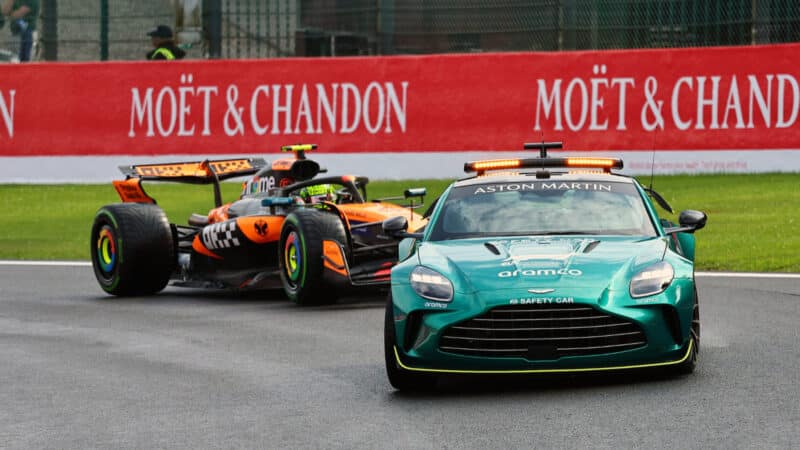
The safety car led the field for four laps
Grand Prix Photo
This extended caution period, while justified from a safety perspective, effectively neutralised the start, a traditional flashpoint for drama at Spa.
By mandating a rolling start in place of the usual standing getaway, crucial opportunities for early shuffling of the order, especially through the La Source-Eau Rouge-Raidillon-Kemmel sequence, were lost.
Inevitably, that caution lingered long after the skies cleared, as the order at the front was pretty much settled on lap 1.
The decision to keep the field in formation for four laps behind the safety car meant the drivers were given little incentive, or ability, to take risks, especially with tyre temperatures tricky in those early laps.
Any sense of urgency or unpredictability was dialled down, leaving the two leading McLarens to escape up the road without threat or interference.
Some drivers welcomed the safety-first approach, while others, like Max Verstappen, felt it was too cautious.
“We barely did any wet laps in the end, which in general is a shame, because I think we could have started way sooner,” he said.
The cautious start was not the only factor contributing to the lack of action, however, as set-up choices and a less effective DRS also played a role in drivers being unable to overtake.
Safety must always come first, but the conservative approach arguably robbed fans of the factors that could have brought the race to live. Instead, they got one of the most processional Belgian Grands Prix in years.
It will never be easy for race direction to judge where exactly to draw the line in these types of conditions, but the tendency is now to err towards extreme caution, and often the result of that is uneventful races.
Piastri showed his killer instinct
After two wins in a row for Norris, Piastri’s performance at Spa solidified his apparent psychological advantage, reinforcing a dynamic that’s been quietly building all season with his usual low-key demeanour but ruthless approach.
That killer instinct, often hiding underneath the Australian driver’s quiet personality, was evident in how he approached the race start and his move to pass Norris after Eau Rouge.
It’s easy to underestimate his overtake because it happened on the Kemmel straight, where many other passes are usually pulled off, but the build-up to it, making sure he was faster than Norris at Eau Rouge in very tricky track conditions, highlighted he was a man on a mission.
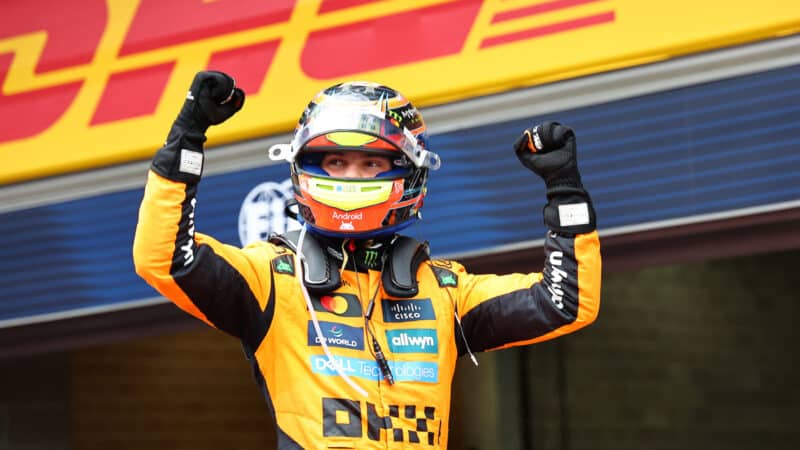
Piastri scored his sixth win of the season at Spa
Grand Prix Photo
Piastri’s calm amid the changeable conditions and his decisive move sent a clear message, as the Australian displayed not only confidence but also the nerve to act when it counted most.
Even as strategic divergence introduced a late-race threat – Norris on hard tyres, chasing on a nominally stronger one-stop – Piastri did not waver.
His tyre management, combined with a series of error-free laps, kept Norris at bay and established a sense of control that Norris couldn’t crack.
Piastri setting his personal best time with two laps remaining is evidence that he had everything under control.
The psychological boost from weathering the pressure at Spa may or may not linger depending on how the Hungarian GP goes, but as the championship battle intensifies, the Belgian GP offered the image of a Piastri showing off an aura of superiority in the intra-McLaren fight.
Hamilton needs to look inward
After openly revealing on Thursday how he is pushing Ferrari for internal changes aimed at progress, there was some sense of painful irony in Hamilton having one of his worst weekends of the season at Spa.
The five-time winner in Belgium spun during sprint qualifying, meaning he started the race in 18th, and then was knocked out in Q1 due to a track limits infraction, again having to take the start from the back of the field.
He managed to have a relatively strong recovery to seventh place on Sunday, but on a weekend where Ferrari introduced a key suspension upgrade, team-mate Charles Leclerc scored his fourth podium in six races while Hamilton is yet to finish in the top three this year.
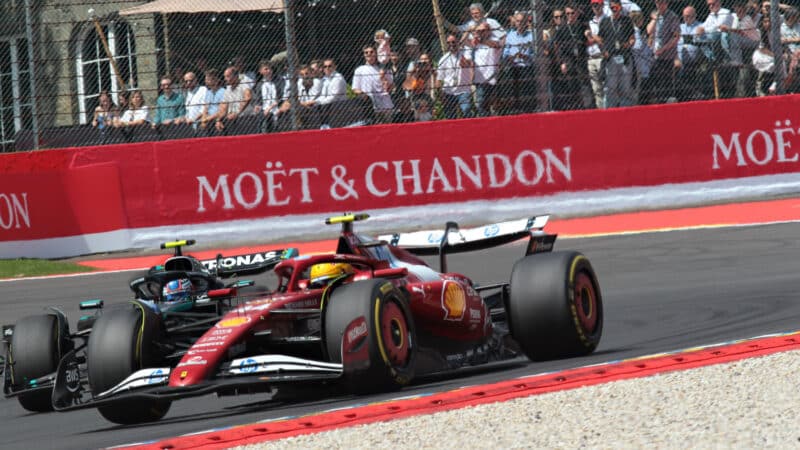
Hamilton’s seventh place was little consolation
Grand Prix Photo
Undoubtedly, Hamilton is right in saying Ferrari needs to make progress in many areas if he is to fight for the title and avoid becoming the next world champion after Sebastian Vettel and Fernando Alonso to leave the Scuderia without a crown.
The shift in Ferrari’s set-up philosophy and wing balance revealed by the race weekend shows Hamilton’s role isn’t just as a driver but as a critical voice in the team’s technical evolution.
However, Spa once again underscored that Hamilton needs some deep introspection if he is to deliver the results expected from a driver of his calibre and experience, as the gap between himself and Leclerc cannot be put down to Ferrari’s issues alone.
Mekies has a lot of work ahead, but keeps his No1 asset
Laurent Mekies made his debut at the helm of Red Bull at Spa, following Christian Horner‘s departure, and the weekend once more highlighted how much progress the team needs in order to catch McLaren, or even to emerge as its leading contender.
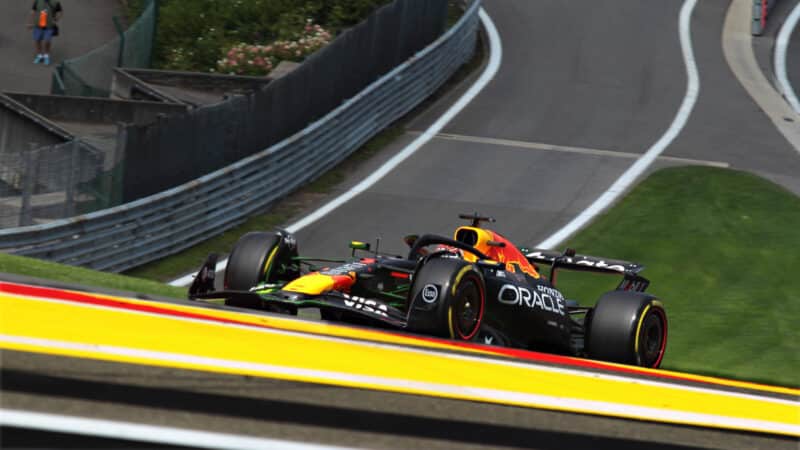
Mekies will at least be keeping Verstappen
Grand Prix Photo
It’s hard to evaluate Mekies’ impact from the outside, although in his very first press conference, he emphasised a return to “Red Bull energy”, aiming to reduce external noise and distractions, and focus the collective mindset purely on racing.
The Frenchman encouraged the team to “make some very bold choices, very bold decisions” in pursuit of marginal gains, especially crucial as the squad adapts to a more competitive grid and eyes major regulation changes for 2026.
The early signs appear to suggest a more collaborative, less confrontational culture, but only time will tell what his philosophy really is and when it starts to pay dividends.
The present reality, however, is that Red Bull keeps losing ground to McLaren, as evidenced by Verstappen’s distant fourth-place finish at one of his favourite tracks. That despite Red Bull introducing a significant amount of upgrades for the weekend.
It is highly unlikely Mekies will have time to make much of an impact on car performance in the remaining part of 2025, but at least the Spa weekend may have secured him his No1 asset for 2026.
Verstappen keeping third place in the standings after the Hungarian GP — now a mathematical certainty — will mean an exit clause in his contract, allowing him to leave if he is fourth in the championship at the start of the summer break, can no longer apply.
As Mekies focuses on helping Red Bull have a strong car in 2026, knowing that its star driver will stay on will at least offer him some peace of mind.
Second driver problems
Apart from Hamilton’s miserable Belgian GP, the Spa weekend highlighted the problems of several other drivers, as only McLaren had both its cars scoring strongly.
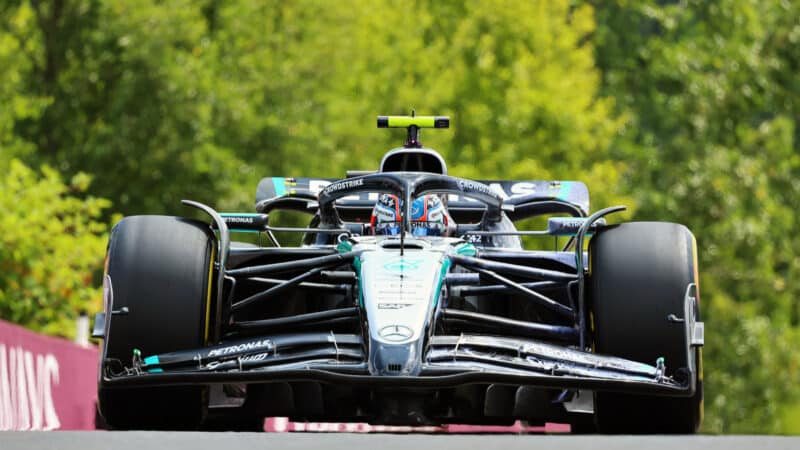
Antonelli kept struggling for confidence at Spa
Grand Prix Photo
Mercedes‘ Kimi Antonelli, struggling for confidence after a string of retirements and non-scores, never recovered from a poor qualifying effort that left him near the back of the grid.
Sent to start from the pitlane due to a power unit change and a breach of parc fermé rules, Antonelli found little comfort in improved car feel; traffic and a lack of overtaking opportunities on Spa’s long straights meant he could climb no higher than 16th, nearly a lap down and well outside the points.
He has scored just once in the last seven races, and Spa was one of his worst performances of the year. At this point, Mercedes might start wondering if the 18-year-old was promoted to F1 too soon.
Another driver with a dismal streak of point-less results, Yuki Tsunoda left Spa with nothing to show for despite some encouraging pace during certain parts of the weekend.
The Japanese saw his promising grid slot evaporate over race distance after dropping into the midfield as a result of doing an extra lap on intermediates. He faded to 13th, unable to convert his improved pace into points, now for the sixth consecutive race.
Further back, Franco Colapinto, still point-less for the season and well behind his team-mate Pierre Gasly, had another weekend to forget, finishing 19th in both the sprint and the main race.
Meanwhile, Carlos Sainz‘s race was doomed from the start as a set-up gamble backfired spectacularly.
The Spaniard said Williams went in the wrong direction in qualifying, and then opted for a pitlane start and a high-downforce rear wing for the race, which it hoped would be wet.
Once the track dried, there was nothing Sainz could do to rescue his weekend, finishing down in a lonely 17th place.
